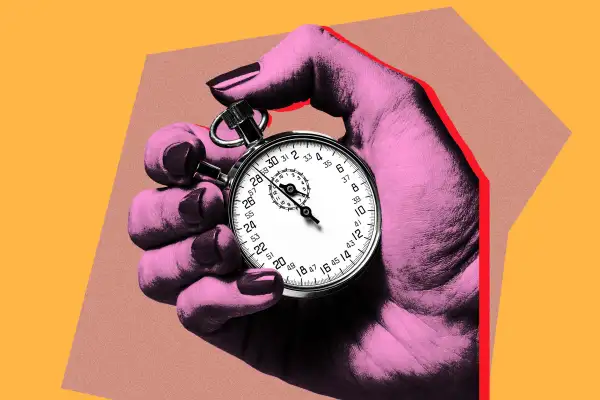Poverty's Hidden Cost: Why the Poorest Americans Die Nearly a Decade Earlier

In the U.S., poverty doesn’t just leave its mark on bank account balances. New research shows it takes many years off people’s lives.
Older Americans are particularly susceptible to the effects of poverty on their lifespan, according to a new study from the nonprofit National Council on Aging, or NCOA, and the University of Massachusetts, Boston. Their research finds that for Americans age 60 and above, the lowest-income earners die an average of nine years sooner than the wealthiest Americans.
“Poverty steals almost a decade of older Americans’ lives,” Ramsey Alwin, NCOA president and CEO, said last week in a news release. “Millions of older Americans who worked hard and played by the rules are dying early simply because they don’t have sufficient financial resources."
It wasn’t only low-income households that were associated with higher rates of death. The bottom 60% of older Americans by wealth had mortality rates nearly double those of the wealthiest 10%.
Bottom 20% (poorest) | 21% to 40% | 41% to 60% | 61% to 80% | 81% to 90% | 91% to 100% (wealthiest) | |
|---|---|---|---|---|---|---|
Household income | $19,560 | $30,112 | $46,200 | $60,286 | $80,400 | $120,000 |
Household net worth | $0 | $33,600 | $148,900 | $387,545 | $1 million | $2.5 million |
5-year mortality rate (2018-2022) | 21% | 19.4% | 17.6% | 14.5% | 12.5% | 10.7% |
Average mortality age | 76 | 79 | 81 | 82 | 83 | 85 |
Regardless of wealth, the five-year mortality rate in the U.S. for Americans 60 and older is 16.7%, according to a Money analysis of World Health Organization data. At roughly 20%, death rates for older Americans with incomes of $30,000 and below are comparable to the rates for older citizens of Cuba, Iraq and Venezuela.
The U.S. has long lagged behind other developed, wealthy nations when it comes to life expectancy. A report released in March by the Senate Health, Education, Labor and Pensions, or HELP, committee found that, as of 2023, Americans died four years younger than those in comparable countries. And within the U.S., the richest 1% of Americans lived seven years longer than the bottom 50% of earners.
“The massive income and wealth inequality that exists in America today is not just an economic issue; it is literally a matter of life and death,” Senator Bernie Sanders (D-VT), a ranking member of the HELP committee, said at the time.
A growing mortality gap
The link between wealth and longevity is well established. But this new research suggests that the life-expectancy gap between the richest and poorest older Americans is widening. The five-year analysis by NCOA, which spans from 2018 to 2022, provides a window into how the pandemic exacerbated inequalities.
For instance, when comparing 2018 to 2022, the net worths of Americans in the bottom 60% declined, as did their median age, revealing that the shocks of COVID-19 had a disproportionately negative impact on the longevity and wealth of most Americans.
At the same time, the wealth of the top 20% of Americans soared. For instance, the net worth of the wealthiest group rose from $1.8 million in 2018 to $2.5 million in 2022 — while the median age of this group actually jumped from 73 to 74 in spite of the deadly pandemic.
“The reality is that the vast majority of older adults are struggling financially now or are at risk of falling into poverty,” the researchers say in the NCOA report. “Most of them will face financial insecurity as they age,” especially when it comes to affording long-term care.
Looking ahead, the researchers have grim expectations, pointing to new Medicaid work requirements and the expiration of Affordable Care Act subsidies. These policy changes are expected to knock some 15 million Americans from their health insurance plans, which could further intensify the trend.
“The future of aging in America will likely be defined by an ever-widening inequality in both financial status and mortality,” they add, “deepening the divide between the majority of older Americans ... and the top 20%.”
More from Money:
The Best Hospitals for Geriatric Care
Best Long-Term Care Insurance Companies of October 2025
This Underused Retirement Strategy Could Boost Your Fixed-Income Payout by 23%




